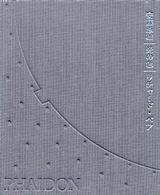- ホーム
- > 洋書
- > 英文書
- > Computer / General
基本説明
多数の折りたたみの幾何学の問題解答と60の未解決の問題を含む。フルカラー。
New in paperback. Hardcover was published in 2007. Erik Demaine won a MacAerhur fellowship in 2003 for his work on the mathematics of origami.
Full Description
Did you know that any straight-line drawing on paper can be folded so that the complete drawing can be cut out with one straight scissors cut? That there is a planar linkage that can trace out any algebraic curve, or even 'sign your name'? Or that a 'Latin cross' unfolding of a cube can be refolded to 23 different convex polyhedra? Over the past decade, there has been a surge of interest in such problems, with applications ranging from robotics to protein folding. With an emphasis on algorithmic or computational aspects, this treatment gives hundreds of results and over 60 unsolved 'open problems' to inspire further research. The authors cover one-dimensional (1D) objects (linkages), 2D objects (paper), and 3D objects (polyhedra). Aimed at advanced undergraduate and graduate students in mathematics or computer science, this lavishly illustrated book will fascinate a broad audience, from school students to researchers.
Contents
Introduction; Part I. Linkages: 1. Problem classification and examples; 2. Upper and lower bounds; 3. Planar linkage mechanisms; 4. Rigid frameworks; 5. Reconfiguration of chains; 6. Locked chains; 7. Interlocked chains; 8. Joint-constrained motion; 9. Protein folding; Part II. Paper: 10. Introduction; 11. Foundations; 12. Simple crease patterns; 13. General crease patterns; 14. Map folding; 15. Silhouettes and gift wrapping; 16. The tree method; 17. One complete straight cut; 18. Flattening polyhedra; 19. Geometric constructibility; 20. Rigid origami and curved creases; Part III. Polyhedra: 21. Introduction and overview; 22. Edge unfolding of polyhedra; 23. Reconstruction of polyhedra; 24. Shortest paths and geodesics; 25. Folding polygons to polyhedra; 26. Higher dimensions.








